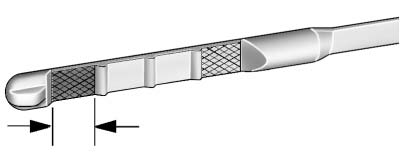Chevrolet Cruze Owners Manual: Engine Oil
To ensure proper engine performance and long life, careful attention must be paid to engine oil.
Following these simple, but important steps will help protect your investment: • Always use engine oil approved to the proper specification and of the proper viscosity grade. See “Selecting the Right Engine Oil” in this section.
• Check the engine oil level regularly and maintain the proper oil level. See “Checking Engine Oil” and “When to Add Engine Oil” in this section.
• Change the engine oil at the appropriate time.
• Always dispose of engine oil properly. See “What to Do with Used Oil” in this section.
Checking Engine Oil
It is a good idea to check the engine oil level at each fuel fill. In order to get an accurate reading, the vehicle must be on level ground. The engine oil dipstick handle is a loop.
Obtaining an accurate oil level reading is essential: 1. If the engine has been running recently, turn off the engine and allow several minutes for the oil to drain back into the oil pan.
Checking the oil level too soon after engine shutoff will not provide an accurate oil level reading.
WARNING
The engine oil dipstick handle may be hot; it could burn you.
Use a towel or glove to touch the dipstick handle.
2. Pull out the dipstick and clean it with a paper towel or cloth, then push it back in all the way.
Remove it again, keeping the tip down, and check the level.
When to Add Engine Oil

If the oil is below the cross-hatched area at the tip of the dipstick, add 1 L (1 qt) of the recommended oil and then recheck the level. See “Selecting the Right Engine Oil” in this section for an explanation of what kind of oil to use.
Notice: Do not add too much oil.
Oil levels above or below the acceptable operating range shown on the dipstick are harmful to the engine. If you find that you have an oil level above the operating range, i.e., the engine has so much oil that the oil level gets above the cross-hatched area that shows the proper operating range, the engine could be damaged. You should drain out the excess oil or limit driving of the vehicle and seek a service professional to remove the excess amount of oil.
Add enough oil to put the level somewhere in the proper operating range. Push the dipstick all the way back in when through.
Selecting the Right Engine Oil
Selecting the right engine oil depends on both the proper oil specification and viscosity grade.
Specification
Use and ask for licensed engine oils with the dexos1® approved certification mark. Engine oils meeting the requirements for the vehicle should have the dexos1 approved certification mark. This certification mark indicates that the oil has been approved to the dexos1 specification.

Notice: Failure to use the recommended engine oil or equivalent can result in engine damage not covered by the vehicle warranty. Check with your dealer or service provider on whether the oil is approved to the dexos1 specification.
Viscosity Grade
SAE 5W-30 is the best viscosity grade for the vehicle. Do not use other viscosity grade oils such as SAE 10W-30, 10W-40, or 20W-50.
Cold Temperature Operation: In an area of extreme cold, where the temperature falls below −29°C (−20°F), an SAE 0W-30 oil may be used. An oil of this viscosity grade will provide easier cold starting for the engine at extremely low temperatures. When selecting an oil of the appropriate viscosity grade, always select an oil of the correct specification. See “Specification” earlier in this section for more information.
Engine Oil Additives/Engine Oil Flushes
Do not add anything to the oil. The recommended oils with the dexos specification and displaying the dexos certification mark are all that is needed for good performance and engine protection.
Engine oil system flushes are not recommended and could cause engine damage not covered by the vehicle warranty.
What to Do with Used Oil
Used engine oil contains certain elements that can be unhealthy for your skin and could even cause cancer. Do not let used oil stay on your skin for very long. Clean your skin and nails with soap and water, or a good hand cleaner. Wash or properly dispose of clothing or rags containing used engine oil. See the manufacturer's warnings about the use and disposal of oil products.
Used oil can be a threat to the environment. If you change your own oil, be sure to drain all the oil from the filter before disposal. Never dispose of oil by putting it in the trash or pouring it on the ground, into sewers, or into streams or bodies of water. Recycle it by taking it to a place that collects used oil.
 Engine Compartment Overview
Engine Compartment Overview
1.4L L4 Engine
1. Engine Air Cleaner/Filter
2. Engine Oil Dipstick.
3. Engine Cooling Fan (Out of View).
4. Engine Oil Fill Cap.
5. Remote Negative (-) Grounding Point.
6. Brake/Clutch ...
 Engine Oil Life System
Engine Oil Life System
When to Change Engine Oil
This vehicle has a computer system that indicates when to change the engine oil and filter. This is based on a combination of factors which include engine revolutio ...
Other materials:
Turn and Lane-Change Signals
Move the lever all the way up or down to signal a turn.
An arrow on the instrument cluster will flash in the direction of the turn or
lane change.
Raise or lower the lever until the arrow starts to flash to signal a lane change.
The turn signal flashes three times.
The lever returns to its ...
Installation Procedure
Position the front end upper tie bar (1) on the vehicle.
Verify the fit of the front end upper tie bar.
Clamp the front end upper tie bar into position.
Braze accordingly.
Braze accordingly.
Grind down weld seams as needed for related panels and components.
Clean a ...
Dome Lamps
The dome lamp controls are in the headliner.
(Dome Lamp Override): Press
to turn the lamps off, even when a door is open.
(Door): Press to turn the
lamps on automatically when a door is opened.
(On): Press to turn on the
dome lamps. ...
